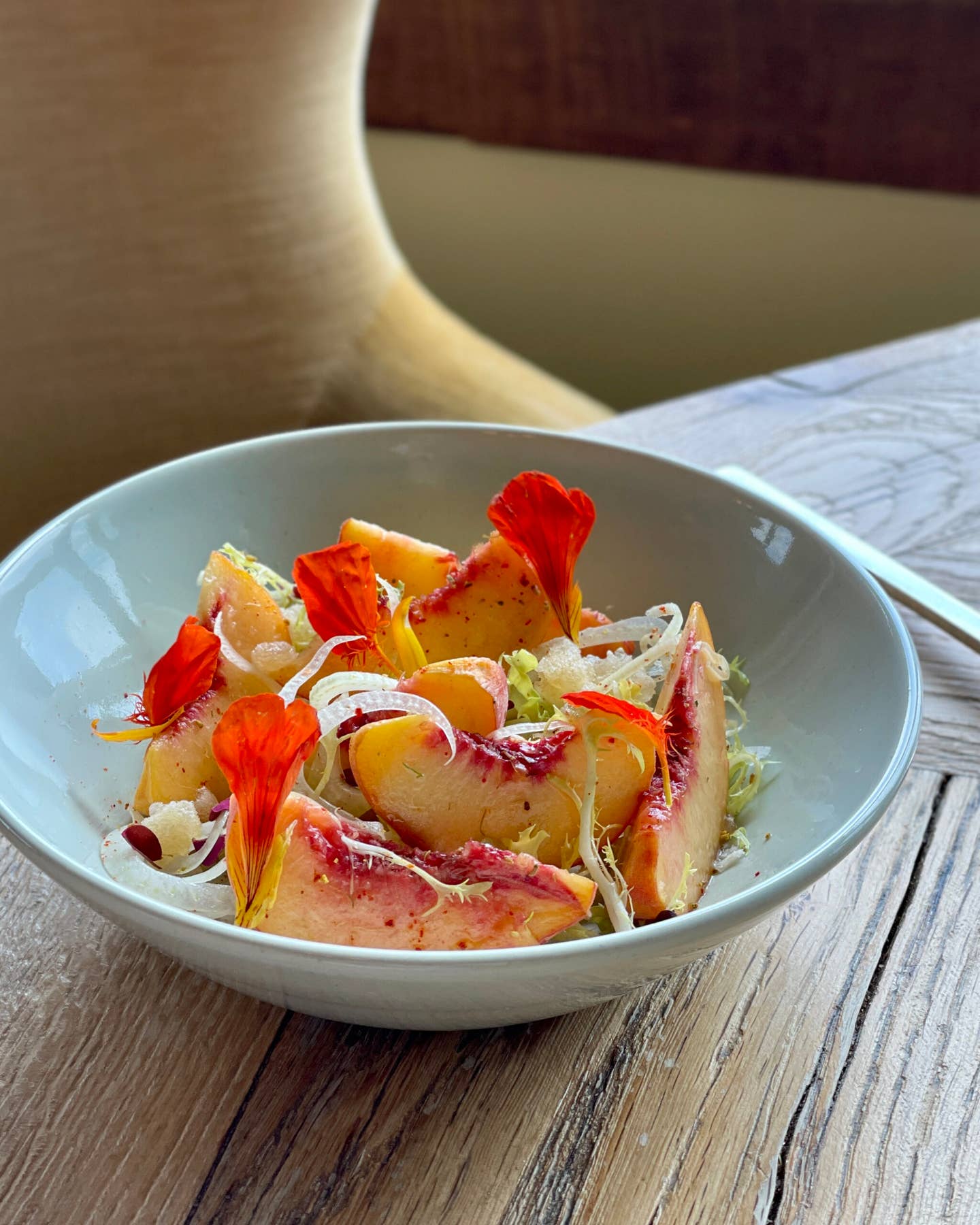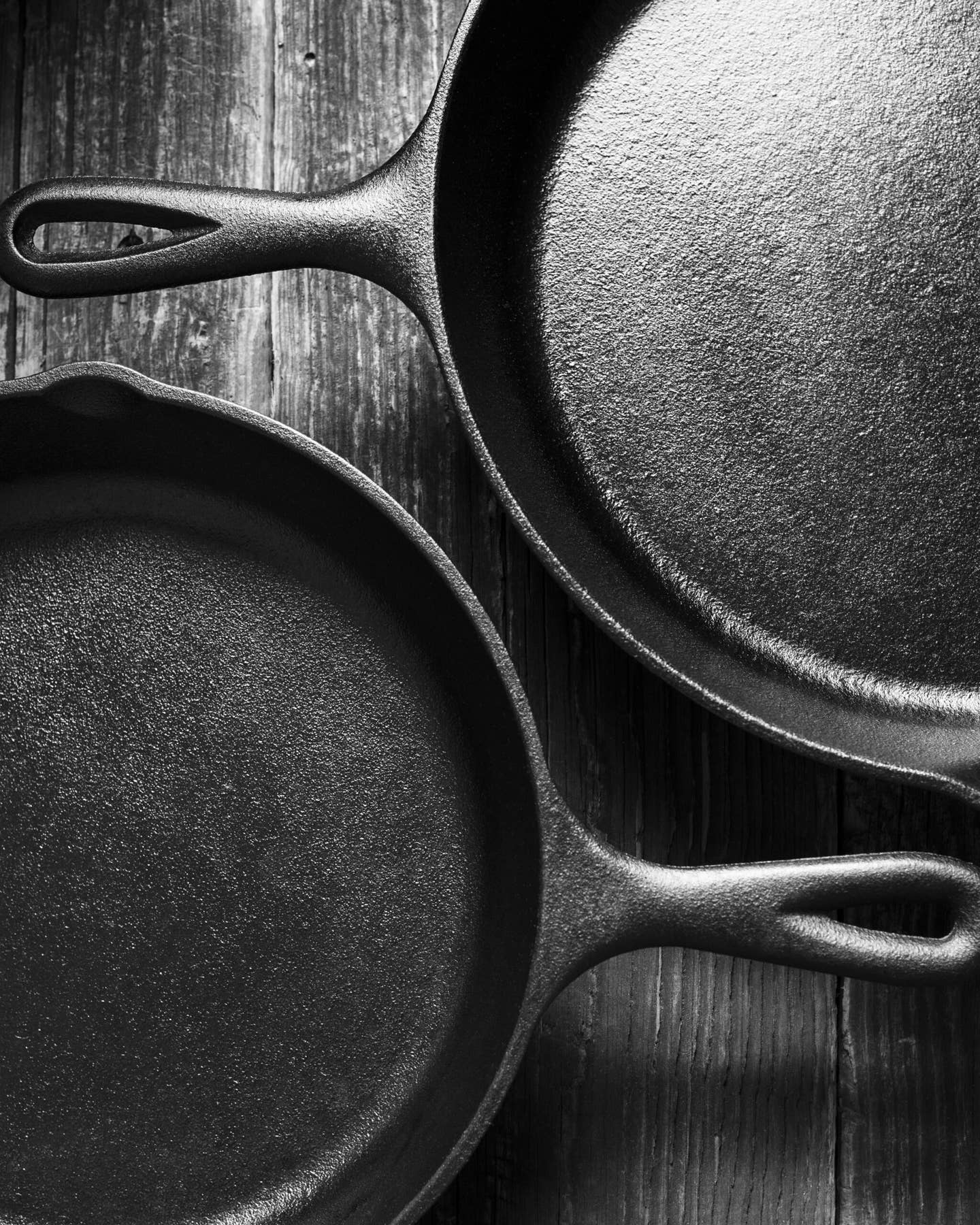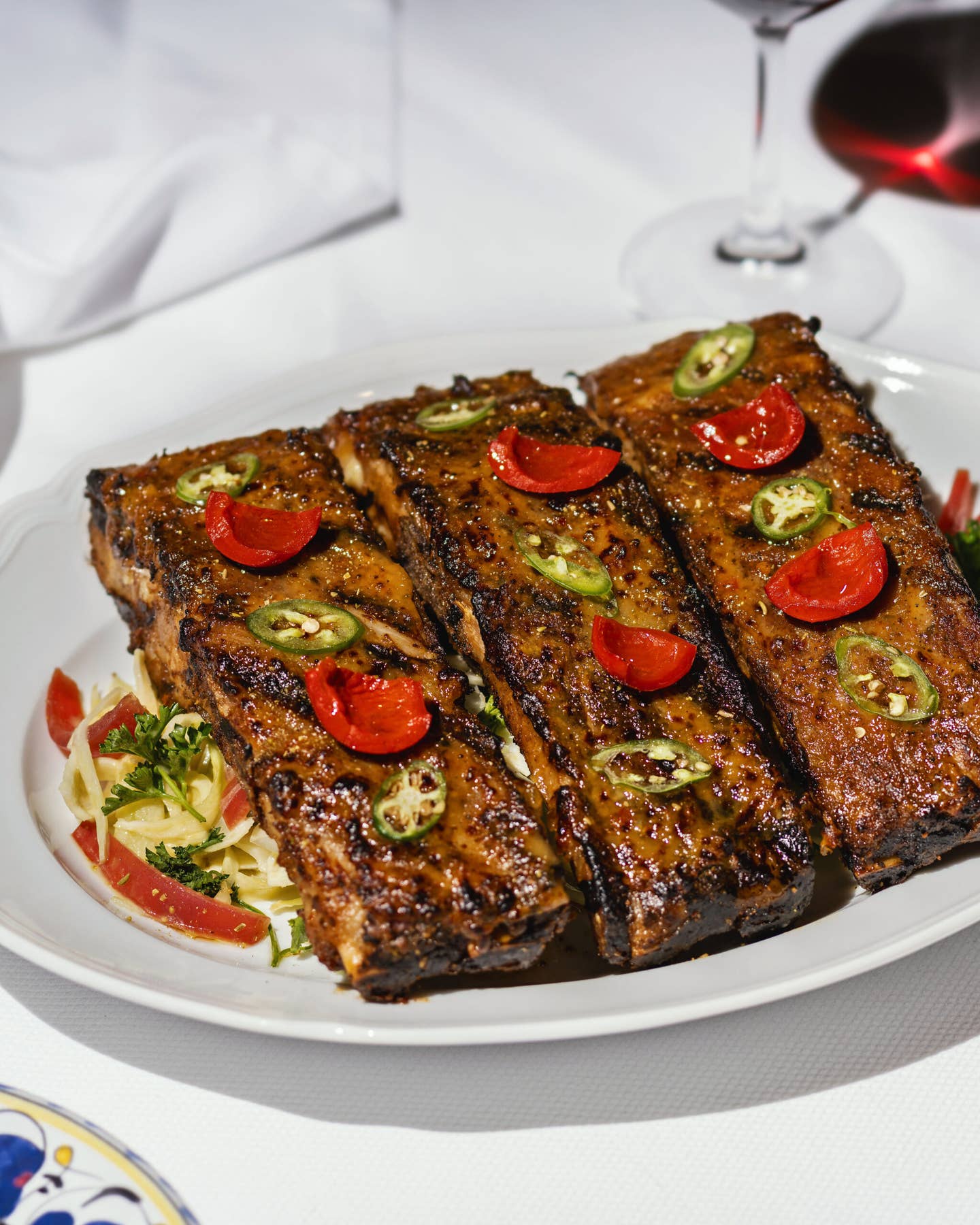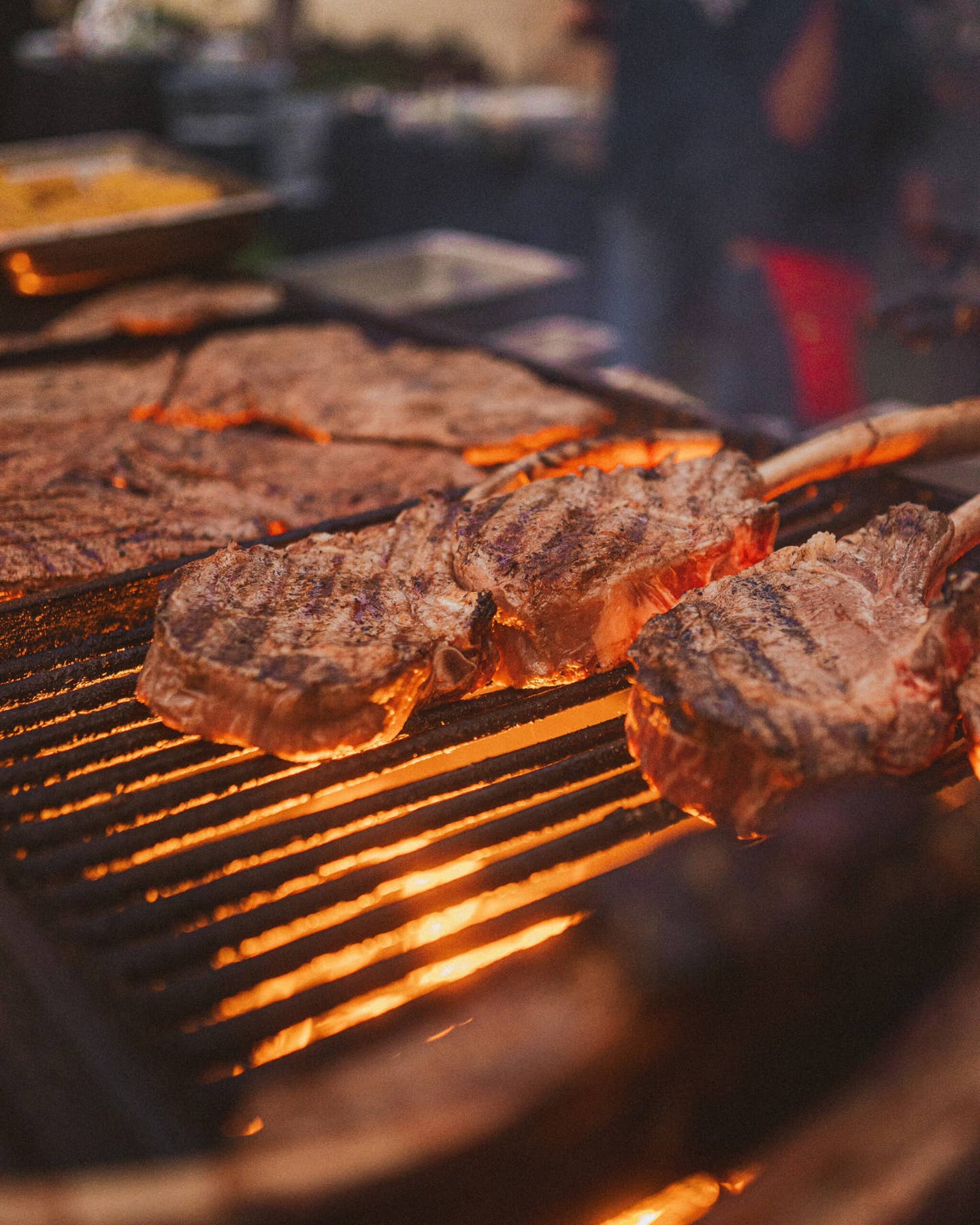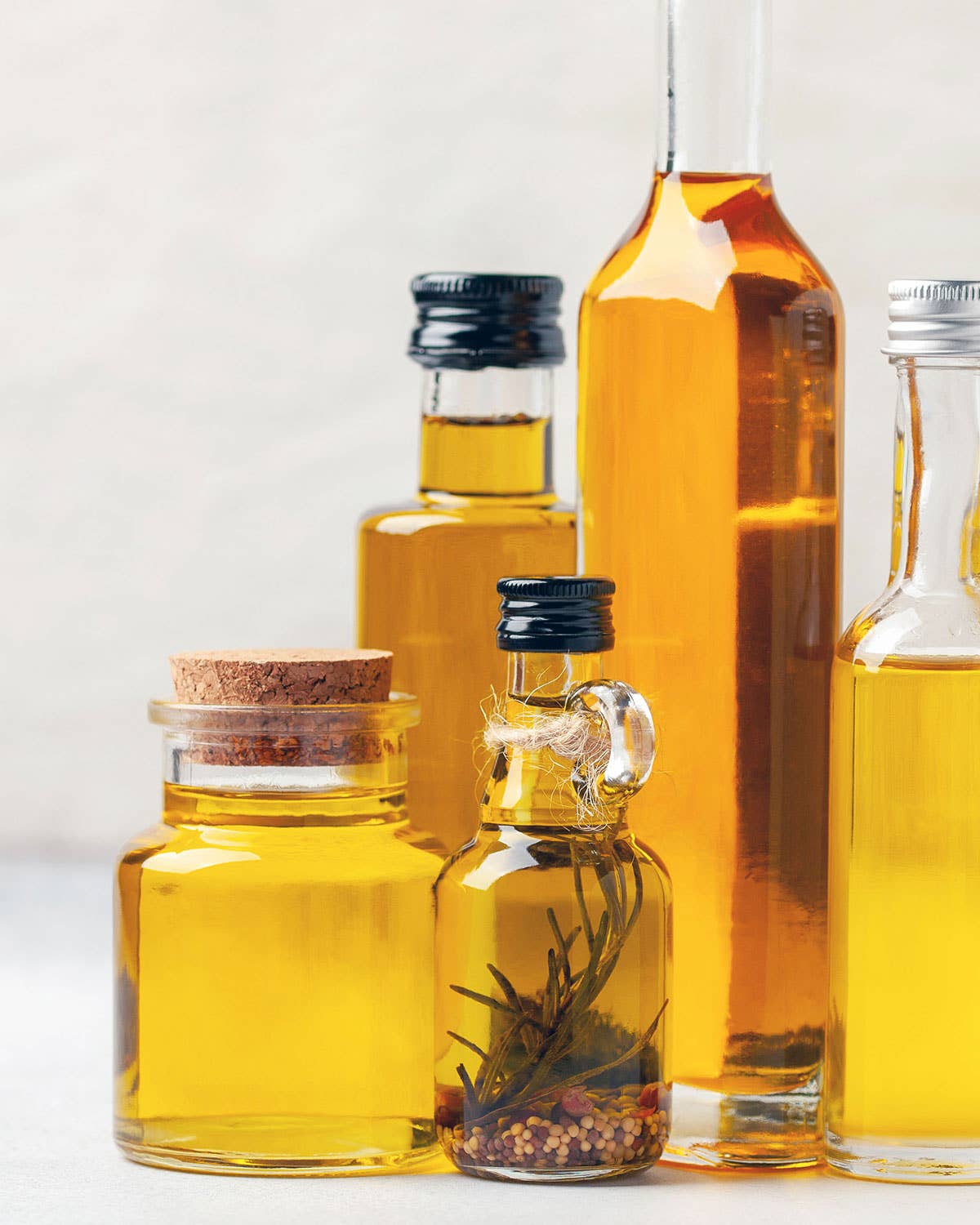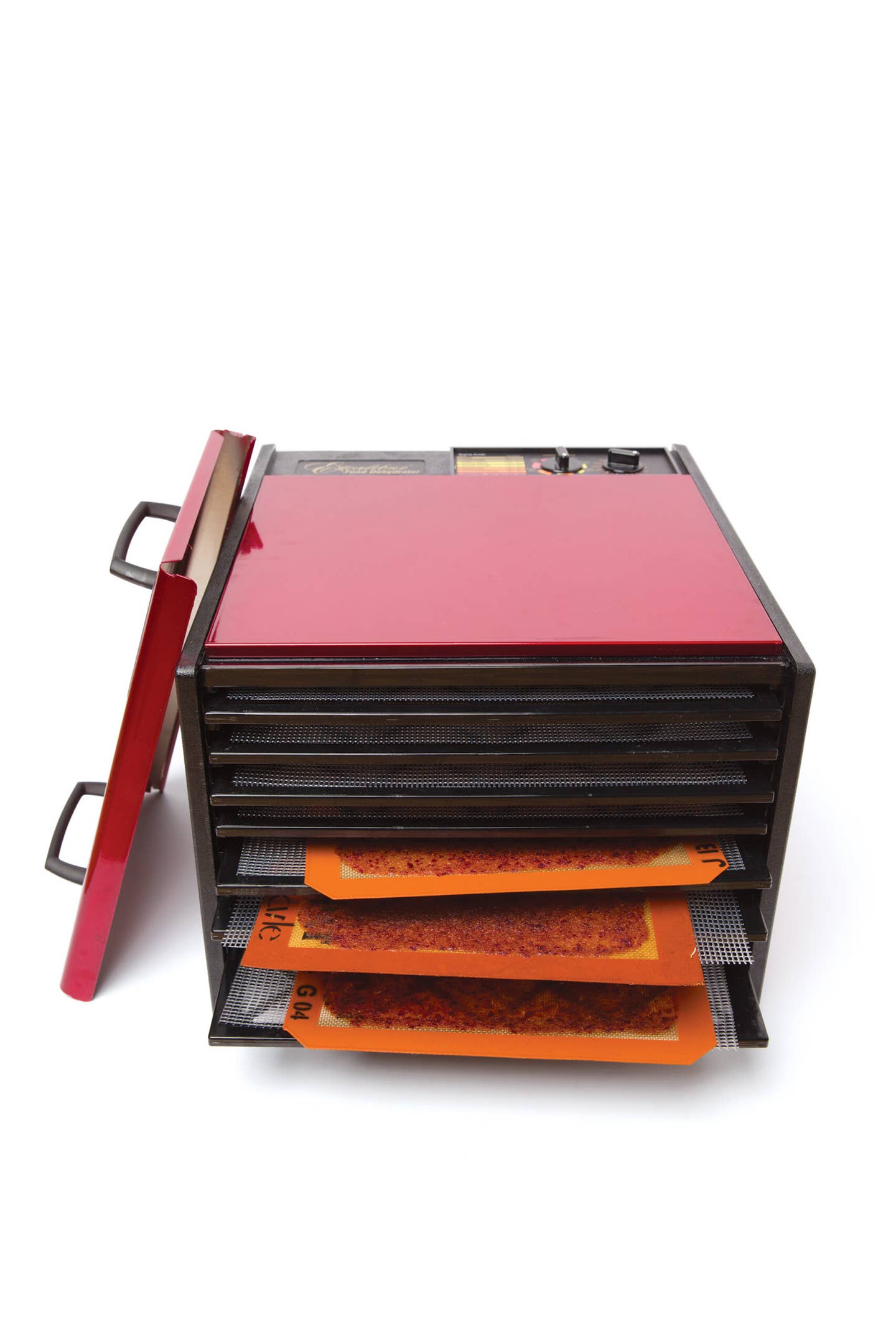
Dehydrate for Flavor
Forget its association with backpacking prep and raw food diets; the boxy dehydrator is a plaything for exploring taste and texture. Removing water from ingredients concentrates flavors; it makes some foods leathery, some crackly, and others light as air. And chefs today are drying foods in more ways than ever before. Think carrot "jerky" at San Francisco's Atelier Crenn, dehydrated savory meringue "buns" for lobster rolls at Atera in New York City, and the dried-then-fried tomato "chicharrones" at Maude in Beverly Hills. Even garden-variety dried foods like raisins take on an impressive depth when you dry them further. A large dehydrator like the Excalibur allows you to do multiple jobs in a minimum of space. Its dry-heat magic just takes patience. After all, if dehydration were speedy, it would be cooking.
Dehydrator
The Excalibur 9-Tray Dehydrator makes drying at home easy ($400; excaliburdehydrator.com). Use it to make fruit leather (shown); it's a great snack and also adds tartness to puddings and cakes. A dehydrator speeds the drying process to 4-6 hours.
Microwave
Pluck dry leaves from parsley, oregano, or thyme stems, and lay them in single layers between sheets of paper towel. Keeping an eye out for wisps of smoke, microwave them in 15-second bursts for 1 to 2 minutes, or until they're crisp.
Oven
Heat oven to 200° or its lowest temperature (on convection, if you have it). Place cherry tomatoes or grapes on a baking sheet fitted with a rack; dry until they're wrinkly and sweet, about 4 hours.
Keep Reading
Continue to Next Story




